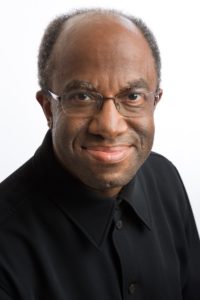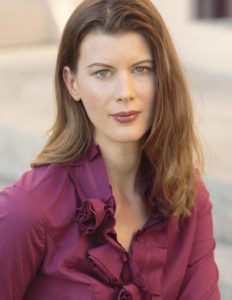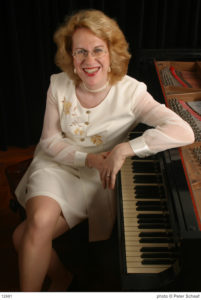Creating inclusion and community
The Maestro of the Oakland Symphony took a courageous stand last Friday, Feb. 9 at the Paramount Theater. In a program titled “Pride & Prejudice: Notes from LGBTQ,” Michael Morgan gave voice to an often invisible population (except at the Pride parades), our own gays and lesbians. Each year Morgan programs a concert highlighting one facet of our diverse East Bay, and over the last ten years his “Notes from…” series has featured composers and performers from Bay Area communities that include Persians and Filipinos, Armenians and Native Americans.

And at Friday’s concert, along with a tribute to the LGBTQ culture, he was tacitly taking his place in that community as a gay man. Having probably faced a lifetime of covert and perhaps even overt prejudices as an African American man, this may have been a small step. But the habits of privacy kept it understated.
Sharing the stage with Morgan as “Master of Ceremonies” was journalist and radio personality Michelle Meow, whose infectious energy and informative introductions to each piece kept the pace lively, all well salted with humor. When describing how she tried to pin Morgan down on his private life, she reported, “I couldn’t get anything from him. All he said was, ‘The Symphony is really, really gay.’”
Associate Conductor Bryan Nies took the podium for Samuel Barber’s First Essay for Orchestra, written at about the same time as his famed Adagio for Strings. Like that elegy, this was slow yet taut. Basses and cellos built a foundation of low notes, rising a third and then a half step down and back up, a beseeching gesture that repeated like some unresolvable Wagnerian question. Those bottom notes were seamless and ephemeral, as if Barber were building mountains in the clouds. The violins added urgency, and then a horn came in, noble and lonely.
Trumpets added their voices, young and firm, with harmonies generated from tight steps in and out of each other.
“[The great conductor] Toscanini never did contemporary music,” noted Morgan, “and when he did he approached Barber, whose Essay is looking back.” But despite that grounding in the past, Nies gave Barber’s slow chords lushness and introspection.
When introducing Benjamin Britten’s Serenade for Tenor, Horn and Strings Meow noted, “Before he came out as a gay man, Britten came out … as a composer [laughter from audience]. It’s true! At the age of nine he wrote his mom a letter saying he wanted to be a composer and would not be going out for football.”
But “coming out” was not a joke in 1940s England. Britten and his partner, Peter Pears, had to be covert about their life choices, and after being investigated on a morals charge from the authorities Pears even entered a pretend marriage with a woman to fend off criticism.

Morgan conducted this long song cycle, with strings delicate enough to balance the tenor, and adding just enough heft to balance the horn. That tenor soloist was Jonathan Blalock, whose clean light sound was as smooth as virgin olive oil. In “Oh Rose! thou art sick” he brought a lovely tension and slow spell. And in “This ae nighte, every nighte and alle” his high passages were really in the alto range, but pure and enchanting.
Meredith Brown took the French horn part and played with such rich clarity that she received a long ovation. The “Prologue” was a horn solo, which she played on a valve-less horn. In other words, every pitch was created by embouchure alone! And her Epilogue was another solo, tender and performed offstage for a sense of distant depth.
Nies returned for Jennifer Higdon’s blue cathedral, a contemporary work that was equal parts searing and sublime. Written after the death of her younger brother, this work featured long passages for the instruments that she and her brother played. Jennifer played the flute, and her brother, Blue, played the clarinet, and there was a sense of delight to the twining and interplay of their instruments.
blue cathedral opened with a ting of triangles like sun glinting on glass, and then woodwinds brought the unhurried sounds of summer and strings added the warm hiss of tall grasses. This work shimmered like the church stained glass that inspired it, and it was an oddly joyous requiem, brightened and darkened with the tolling of tubular bells. Nies conducted this with care and feeling.
While all three composers of the first half of the program belonged to the LGBTQ community, less is known of Camille Saint-Saëns, who did indeed marry at the age of 40 but that was short-lived. His fiery Piano Concerto No. 2 in G minor opened the second half, performed by Sara Davis Buechner, and it was an extraordinary event of liquid thunder that brought the audience to their feet.
Morgan was attentive and restrained, with small gestures that impeccably kept the orchestra attuned to the sudden entrances and whimsical tempos of the soloist.

And that soloist! I have heard her before, and marveled at her rare abilities. When she was known as David Buechner she played in many of the world’s top halls, but coming out as a woman crushed her career for two long decades. Luckily, it did not diminish her ferocious attacks or deep sympathy, and I was again grateful to have the opportunity to hear her.
They finished the evening with a song cycle by Tim Rosser and Charlie Sohne that was commissioned by the Oakland Symphony for this concert. Featuring five tight-harmony singers and soloist Noah Galvin, this was an orchestral work of musical theater that carried more than one uplifting message.
“With the right music, everything’s possible…I’m not alone,” sang Galvin with exceptional tenor clarity, as he described the coming of age of a young gay man, and reached out to many in the audience (and there were a lot of younger faces in the audience). The four songs that followed ranged from innocence to first crush to heartbreak and then to self-acceptance, ending with a provocative promise to those that refuse to accept people who are different.
“You’re afraid we will corrupt your children. You’re right. We’ll make them tolerant and fair… someone’s got to teach them not to hate.”
The orchestra was snappy and tight, and Morgan was at times dancing on the podium to the simple rhythms and heartfelt themes, and the audience left happy.
Who knew tolerance could be such fun!
—Adam Broner
Photo top of French horn player Meredith Brown; below, of pianist Sara Davis Buechner; both photos courtesy of the artists.
